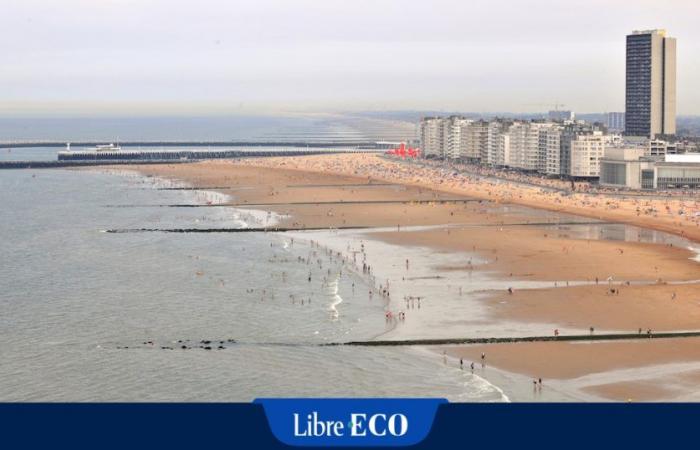However, the number of multi-owners who declare themselves as such to the FPS Finances is increasing. According to these declarations, 1.15 million Belgians are the happy owners of at least two properties. That’s 7% more than in 2022 and even 16% more compared to 2019. Huge.
Tax on second homes: a new victory for coastal owners supported by Test-Achats?
However, it must be taken into account that this figure includes all property which is not the main residence. That is to say both houses and apartments occupied recreationally and housing intended to produce income.
In its barometer of the second residence which has just been published, BNP Paribas Fortis fails to make a formal distinction between what is recreational and what is rental.
The bank nevertheless draws many lessons from it.
1. One in four loans allocated to a second residence
Even though the number of loans allowing you to invest in housing other than the one you occupy is decreasing, their share still represents a quarter of mortgage loans at BNP Paribas Fortis. Which is not negligible.
“Most are classic loans on which the bank knows how to take a guarantee, says Marc Delforge, credit sales manager at BNP Paribas Fortis. Which also explains the small proportion of our activity (7%) on properties abroad that cannot be mortgaged.”
Second residences: how Beauraing manages to compete with Durbuy
But another type of loan is showing great success: “bullet” or “fixed-term” credit, which means that the borrower only pays the interest, to repay, in one go, the capital at maturity. of the loan. “It represents 8% of loans made as part of the acquisition of a second property, confirms the expert. A substantial percentage knowing that we only practice it if we have the guarantee of income, via group insurance, for example, or a term investment.” In other words, the expected capital gain on the resale of the property after fifteen or twenty years is not enough. “The bank is there to support a client in wealth prospects, not to take the risks for them, he insists. If he buys a property to rent it out and if he generates income, it is normal that he repays the capital.”
2. The amounts borrowed have decreased significantly
In 2023, the average amount borrowed by Belgian candidates to acquire a second residence whatever it is and wherever it is located, stands at 219,700 euros. That is 17,000 euros less than a year ago. This decline (-7%) is a first in five years. The bank’s credit manager first explains it by the rise in mortgage interest rates. “This especially applies to properties purchased for rental purposes, explains Marc Delforge. The candidates, concerned about the monthly payments to be paid, arrange to put in more equity.” But it is also their qualities as negotiators that he highlights. “The quota has not really changed in a year, hovering around 70%. This means they either bought cheaper goods or successfully traded them down.” “And that they did not act on impulse.”he smiles, which has undoubtedly been too often the case in the rush years of 2020-2022.
3. Seven out of ten second residences acquired in 2023 were houses
The vast majority (93%) of loans carried out by BNP Paribas Fortis on the second residence market concern properties in Belgium. In Flanders especially (54%), in Wallonia also (31%) and a little in Brussels (15%). This is, of course, due to the respective sizes of these three markets but also to the existence of certain flagship locations here and there. Thus, alone, the ten seaside resorts on the Coast account for 7% of loans. As for the fifty or so municipalities that make up what we can call the Belgian Ardennes, they account for 4.5%.
Fewer Belgians buying a second home abroad in 2023
On the other hand, and quite surprisingly, 68% of the assets attached to the loans are houses. That’s almost seven out of ten goods. “It may seem like a lot but, in Belgium, and even more so in Wallonia, the real estate market is mainly made up of houses, continues Marc Delforge. This explains it. Added to this is the need for space and greenery caused by Covid, which has seen buyers prefer a house to an apartment.”
At BNP Paribas Fortis, the definition of second residence covers a very broad spectrum. Statistically at least. It includes both the apartment on the Coast or the chalet in the Ardennes that a Brussels owner would buy as well as the house in the Condroz of Namur or Liège that he would buy in order to move there soon…
4. Always more investments to generate income
We know the safe haven of bricks. In 2019, 58% of borrowers understood this, who acquired a second residence to rent it out and earn income from it. From year to year, their share has increased to reach, in 2023, 66%. “In two out of three cases, economic prospects underlie the acquisition of a second property”translated Marc Delforge. Which does not mean that other properties will not occasionally be rented out. If only to pay the fees and charges.”





